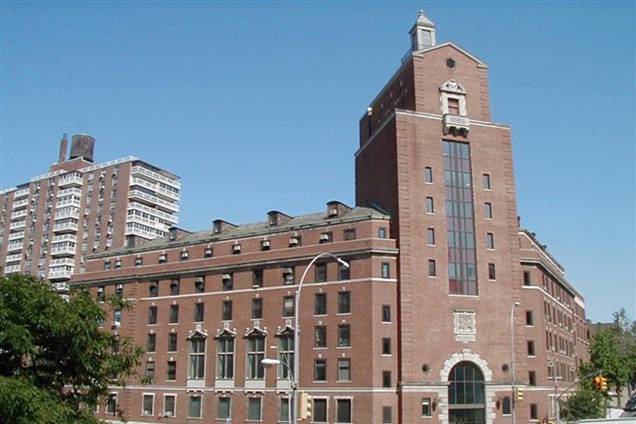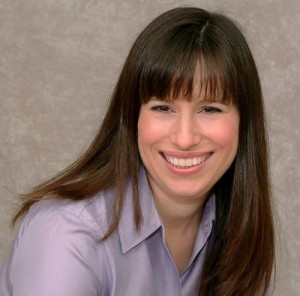In honor of Tu B’Shevat, I’m pleased to publish a guest blog post on the need for “Green Rabbis,” by David Krantz, president and chairperson of the Aytzim: Ecological Judaism (first posted on aytzim.org). It’s a perfect fit for the online component of Keeping Faith in Rabbis. A Community Conversation about Rabbinical Education. Of the many submissions that I received, this was the only one highlighting the importance of incorporating environmental thought and action into rabbinical education—a case that the author makes convincingly. Do you agree?
By David Krantz
NEW YORK (Feb. 3, 2015 / erev Tu B’Shvat, 5775) — Meals served on Styrofoam plates with plastic utensils. Trays of leftover food simply thrown away. And the lights left on all night. From synagogues to Jewish student centers, these are very common Shabbat experiences. Clearly there is a gap between modern Jewish practice and environmental values. But there’s also a large gap between modern Jewish practice and the environmental tenets of Judaism.
Judaism is an inherently environmental religion, with so much written about it, by myself[1] and many others — particularly rabbis Ellen Bernstein,[2] Fred Scherlinder Dobb,[3] David Sears,[4] David Seidenberg,[5] Lawrence Troster[6] and Arthur Waskow,[7] and profs. Richard Schwartz,[8] Hava Tirosh-Samuelson[9] and Martin Yaffe[10] — that I don’t need to repeat here the extent of environmental values present in Jewish laws, customs and practice. Still, outside of the nascent Jewish-environmental movement, I rarely meet rabbis who are familiar with Jewish-environmental wisdom. Usually, as a leader of a Jewish-environmental nonprofit, Aytzim: Ecological Judaism, I am asked by rabbis what’s Jewish about environmentalism. It is the extent to which Jewish clergy and, in turn, their communities, are unaware of the environmentalism that flows through Judaism that is troubling. And that lack of knowledge, in part, can be traced to the lack of Jewish-environmental education in rabbinical schools.
Yet two new studies indicate that the Jewish community is increasingly drawn to the Jewish environmental movement. A survey by the Green Hevra, a network of Jewish environmental organizations, found across the United States and Canada more than 120 Jewish-environmental initiatives that combine to reach more than 670,000 people annually.[11] And a second study coordinated by Hazon found that more than 80 percent of those who participate in immersive Jewish outdoor, food and environmental education programs report an increased sense of hope for the Jewish people.”[12]
While Jews are being attracted to Jewish environmentalism in ever-growing numbers, rabbinical schools are largely failing to prepare their students — our future rabbis — to engage environmentally minded communities. And, perhaps worse, Jews who have not come into contact with the Jewish environmental movement continue to see environmentalism as a solely secular, rather than a Jewish, value. Judaism actually speaks to their values, but they don’t know that because their rabbis don’t know it either.
So what can be done? The Jewish social-justice movement provides a good case study.
Jews today certainly know about social justice — what we often call tikkun olam, or literally, “repairing the world.” It seems the phrase is everywhere in Jewish life nowadays. But that wasn’t always the case. Historically, the first Jewish social-service organizations in the United States began in the early 1800s[13] — and it wasn’t until the mid-1800s that Luigi Taparelli D’Azeglio, an Italian Jesuit priest, coined the term “social justice” itself.[14] The modern Jewish social-justice movement, like its secular contemporary, developed in the 1950s and 1960s[15] and today across the country there are hundreds of Jewish social-justice initiatives, including 25 national groups in the Jewish Social Justice Roundtable.[16]
The growth of the Jewish social-justice movement has paralleled the embracement of Jewish social justice by rabbinical schools. Currently, most major American rabbinical schools include Jewish social justice in their curricula and activities, and several join together to run social-justice workshops. The Orthodox movement’s Yeshivat Chovevei Torah in New York regularly sponsors tikkun olam programs. The Reconstructionist Rabbinical College, in suburban Philadelphia, incorporates a social-justice organizing program. The transdenominational Hebrew College, outside Boston, hosts what it calls a “global social justice beit midrash.” And the New York campus of the Reform movement’s Hebrew Union College even runs its own soup kitchen for the community.
It’s time for rabbinical schools to embrace Jewish environmentalism in the same way. Every rabbinical school should offer, and ideally require, at least one course in Jewish environmentalism. Rabbinical schools should examine and minimize their own environmental footprints. And rabbinical schools should follow the lead of Hebrew College, which recently teamed with Jewish Farm School to offer a for-credit intensive course on sustainable agriculture.
Which rabbinical school will lead the way by offering an academic focus in Jewish environmentalism? Which will be the first to eliminate landfill trash and recycle and compost all of its waste? And which will be the first to forsake fossil fuels and go carbon neutral?
Jewish clergy should be leading the community with environmental thought and action. That’s why Aytzim has joined forces with GreenFaith to launch Shomrei Breishit: Rabbis and Cantors for the Earth.[17] But that’s not enough. Rabbinical schools need to be more active in Jewish-environmental education. We need Jewish clergy who understand Jewish environmental wisdom as well as they know traditions governing Shabbat. After all, protecting the Earth is one of the first commandments in the Torah. Rabbinical schools would be wise to heed the Torah’s sustainability call. A new generation of green-minded Jews needs the guidance of a new generation of green-minded rabbis.
Krantz, David, ed. Jewish Energy Guide. Green Zionist Alliance (now Aytzim) and the Coalition on the Environment and Jewish Life, 2014.
Author of Ecology and the Jewish Spirit: Where Nature and the Sacred Meet (2000: Jewish Lights); Splendor of Creation: A Biblical Ecology (2005: Pilgrim Press); and, with Dan Fink, Let the Earth Teach You Torah (1992: Shomrei Adamah).
Author of Sustained Sustainability: Eco-Judaism in the Pulpit, Enriched with Interfaith Intersections (2009: Doctoral thesis).
Author of The Vision of Eden: Animal Welfare and Vegetarianism in Jewish Law and Mysticism (2003: Orot).
Author of Ecology and Kabbalah: God’s Image in the More-Than-Human World (Forthcoming 2015: Cambridge University Press).
Author of Mekor Hayyim: A Source Book on Water and Judaism (2012: United Synagogue of Conservative Judaism).
Editor of Torah of the Earth: Exploring 4,000 Years of Ecology in Jewish Thought: Biblical Israel and Rabbinic Judaism (2000: Jewish Lights); and co-editor of Trees, Earth, and Torah: A Tu B’Shvat Anthology (2000: Jewish Publication Society).
Author of Judaism and Vegetarianism (1982: Lantern Books); Judaism and Global Survival (2002: Lantern Books); and, with Yonassan Gershom, Who Stole My Religion? Revitalizing Judaism and Applying Jewish Values to Help Heal Our Imperiled Planet (2012: Lulu).
Editor of Judaism and Ecology: Created World and Revealed Word (2003: Center for the Study of World Religions).
Editor of Judaism and Environmental Ethics (2001: Lexington Books).
Gleanings from Our Field: Green Hevra Report 2014. Green Hevra, 2014.
Seeds of Opportunity: A National Study of Immersive Jewish Outdoor, Food, and Environmental Education (JOFEE). Informing Change, 2014.
Diner, Hasia R. The Jews of the United States, 1654 — 2000. University of California Press, 2006.
Zajda, Joseph I., ed. Globalization, Education and Social Justice, Springer, 2009.
Cohen, Steven M., and Fine, Leonard. American Jews and Their Social Justice Involvement: Evidence from a National Survey. Amos – The National Jewish Partnership for Social Justice, 2001.
Jewish Social Justice Roundtable, members and allies: http://jewishsocialjustice.org/members
Membership for Jewish clergy and rabbinical and cantorial students is free at: http://aytzim.org/rce
See Genesis 2:15, which commands us to serve and guard (often mistranslated as “till and tend”) the Earth.
David Krantz is the president and chairperson of the Aytzim: Ecological Judaism.

